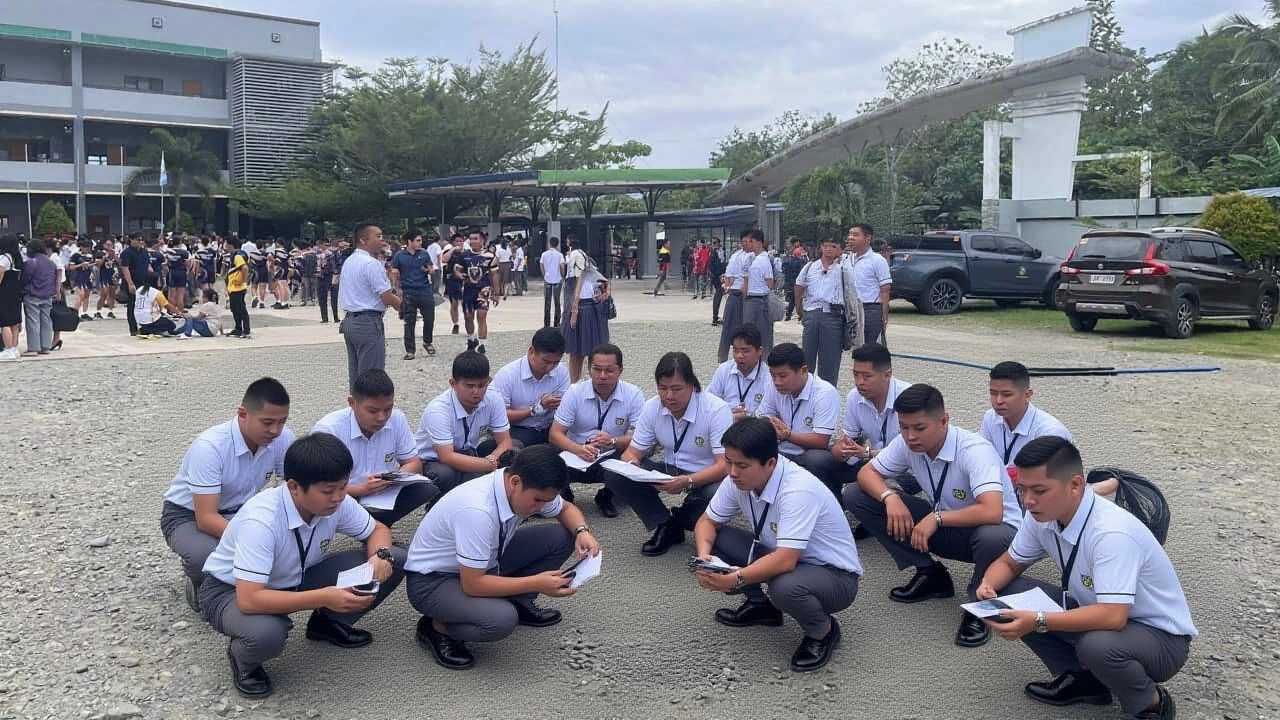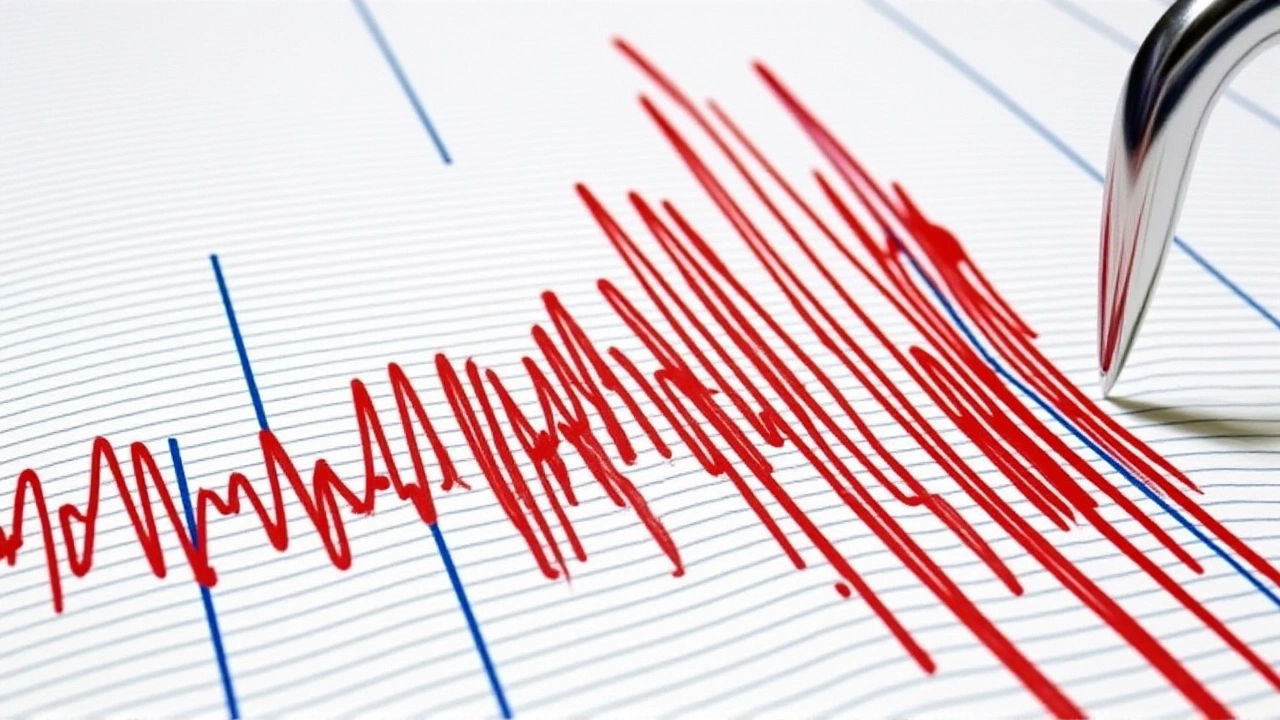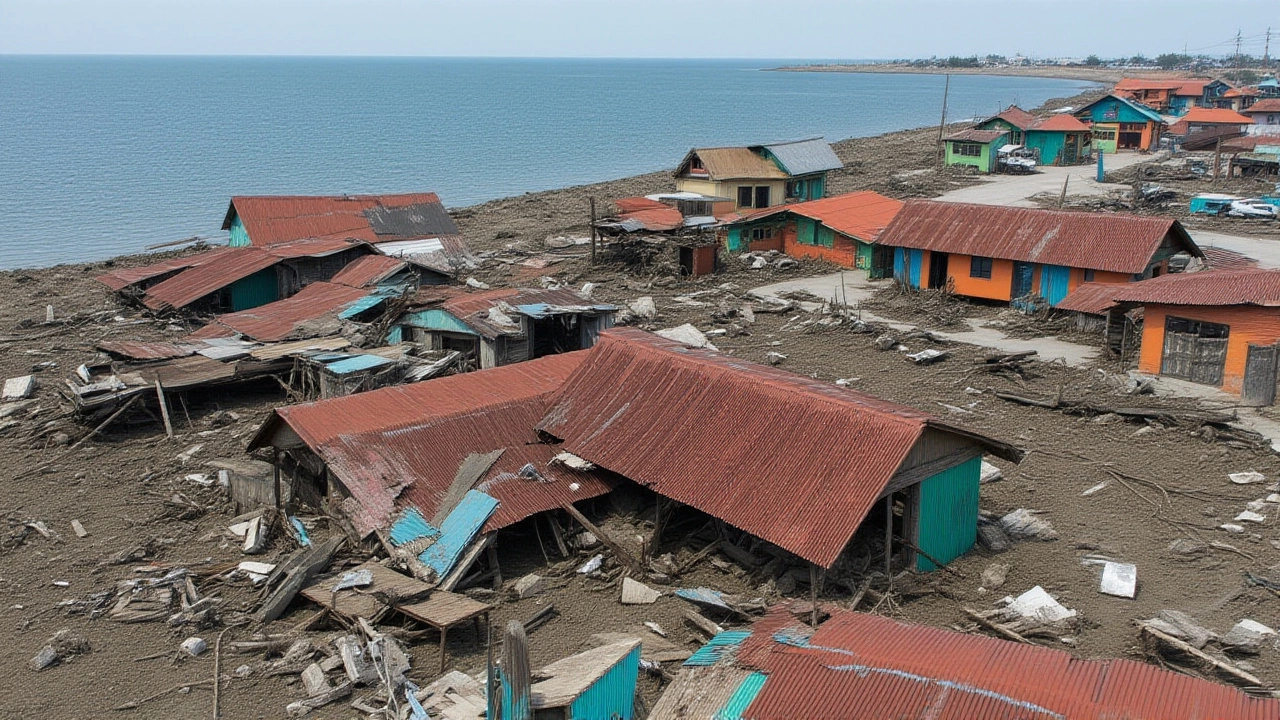When Mindanao earthquake struck off Manay, Davao Oriental on Friday, October 10, 2025, it registered a magnitude of 7.4, leaving at least two dead and prompting a brief tsunami warning.
The tremor’s epicentre lay about 20 km southeast of Manay in the Celebes Sea, a hotspot of the Pacific Ring of Fire where the Philippine Sea Plate slides beneath the Eurasian Plate. Philippine Institute of Volcanology and Seismology (PHIVOLCS) immediately recorded the shock and issued a tsunami alert covering a 300‑kilometre radius.
Why the Mindanao Quake Happened: Tectonic Background
Scientists say the Ring of Fire generates about 90 % of the world’s seismic activity. The Philippines, perched on several converging micro‑plates, sees more than 200 measurable quakes a year. USGS data confirm that the 2025‑10‑10 event originated at a shallow depth of roughly 15 km, amplifying surface shaking across Mindanao.
Ground Shaking and Immediate Damage
In Panabo City, residents felt Intensity VII on the Modified Mercalli Scale. Video footage showed fire trucks swaying like giant pendulums and people scrambling to open spaces. A few kilometres north, Butuan City recorded Intensity VI, with shoppers ducking under tables as office windows rattled.
The death toll—two men aged 42 and 58—was confirmed in Monkayo, Davao de Oro. Emergency responders said the victims were caught in a collapsing wall while seeking shelter.

Government and Humanitarian Response
The National Disaster Risk Reduction and Management Council (NDRRMC) warned of strong aftershocks and kept the tsunami alert active for a little over an hour. By 14:47 UTC, the Pacific Tsunami Warning Center in Honolulu confirmed the alert could be lifted as buoy data showed no wave exceeding 0.3 m.
Teams from the Department of Social Welfare and Development (DSWD) and the Office of Civil Defense (OCD) began rapid assessments. Their preliminary count: 127 public schools, 34 hospitals and 89 government buildings showing varying degrees of structural damage.
Meanwhile, the Philippine Red Cross, led by Chairman and CEO Richard J. Gordon, dispatched 14 mobile medical units to the hardest‑hit barangays. "Our priority is to get medical care to remote villages where landslides have cut off access," Gordon said in a brief statement.
Aftershocks, Tsunami Alert and Weather Concerns
Teresito Bacolcol, director of PHIVOLCS, cautioned that aftershocks of magnitude 5.0 or greater were likely within the next 72 hours, with the highest probability in the first 24 hours. Residents were urged to keep emergency kits ready and avoid low‑lying riverbanks.
The Philippine Atmospheric, Geophysical and Astronomical Services Administration (PAGASA) issued a rainfall advisory for October 11‑12, warning that heavy rain could trigger additional landslides in the already destabilised Caraga region.

Long‑Term Implications for the Region
Damage assessments indicate that 42 schools in Davao Oriental will need major repairs, while nine hospitals—including the Davao Regional Medical Center—face compromised structural integrity. The Department of Public Works and Highways (DPWH) is drafting a ₱4.2 billion (≈ US$73 million) reconstruction plan.
Historically, the Philippines’ deadliest quake was the 1976 Moro Gulf event (magnitude 8.0) that killed up to 8,000 people. The 2025‑09‑26 Cebu quake, a magnitude 6.9 shock, had already strained national disaster resources, claiming 74 lives and causing $127.8 million in damage. The back‑to‑back nature of these events underscores the urgent need for resilient building codes and community preparedness.
Looking ahead, PHIVOLCS and the NDRRMC will continue to monitor seismological data, while humanitarian groups stand ready to deploy additional relief kits if aftershocks trigger further collapses. No formal international aid request has been filed yet, but regional partners have expressed willingness to assist.
- Magnitude: 7.4
- Date: October 10, 2025
- Deaths: 2 confirmed
- Buildings inspected: 127 schools, 34 hospitals, 89 government structures
- Tsunami alert: lifted after 1 hour, no significant waves recorded
Frequently Asked Questions
How are residents of Davao Oriental being protected from aftershocks?
Local officials have set up temporary shelters in schools and community halls, distributed sandbags, and posted nightly alerts through radio and mobile apps. PHIVOLCS teams conduct hourly inspections of high‑risk structures, and volunteers help clear debris that could become hazardous during subsequent tremors.
What impact will the forecasted rains have on rescue operations?
PAGASA’s rain advisory raises the risk of landslides, especially in the Caraga barangays where roads are already blocked. Relief teams are pre‑positioning flood‑resistant supplies and have deployed portable water pumps to prevent secondary flooding of already damaged shelters.
Why was a tsunami alert issued if the quake was offshore?
Any magnitude‑above‑7.0 quake beneath the sea can displace a sizable water column. PHIVOLCS follows a precautionary protocol that automatically triggers a warning for coastal provinces within 300 km. Subsequent buoy readings showed only minor sea‑level changes, allowing authorities to lift the alert within an hour.
How does this event compare to the September 26 Cebu earthquake?
Both quakes struck in the same month, but the Cebu shock was slightly weaker (6.9) yet deadlier, with 74 fatalities and over $127 million in damage. The Mindanao quake, while stronger at 7.4, has resulted in fewer deaths so far but is affecting a wider geographic area, prompting a more extensive infrastructure assessment.
What long‑term measures are being considered to reduce future quake damage?
The government is reviewing building‑code compliance, especially for schools and hospitals, and exploring retrofitting programs funded by the national budget and international partners. Community drills are being scheduled quarterly, and a new early‑warning SMS system is slated for rollout by early 2026.

Trenton Whitworth
Hi, I'm Trenton Whitworth, a sports enthusiast with a passion for tennis. I've been studying and analyzing various sports for over a decade, with a particular focus on tennis. I love sharing my knowledge and insights through writing and have contributed to several publications. My goal is to help others better understand the game and inspire them to enjoy it just as much as I do. I believe that staying active and engaged in sports can lead to a healthier and happier life.